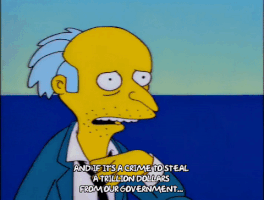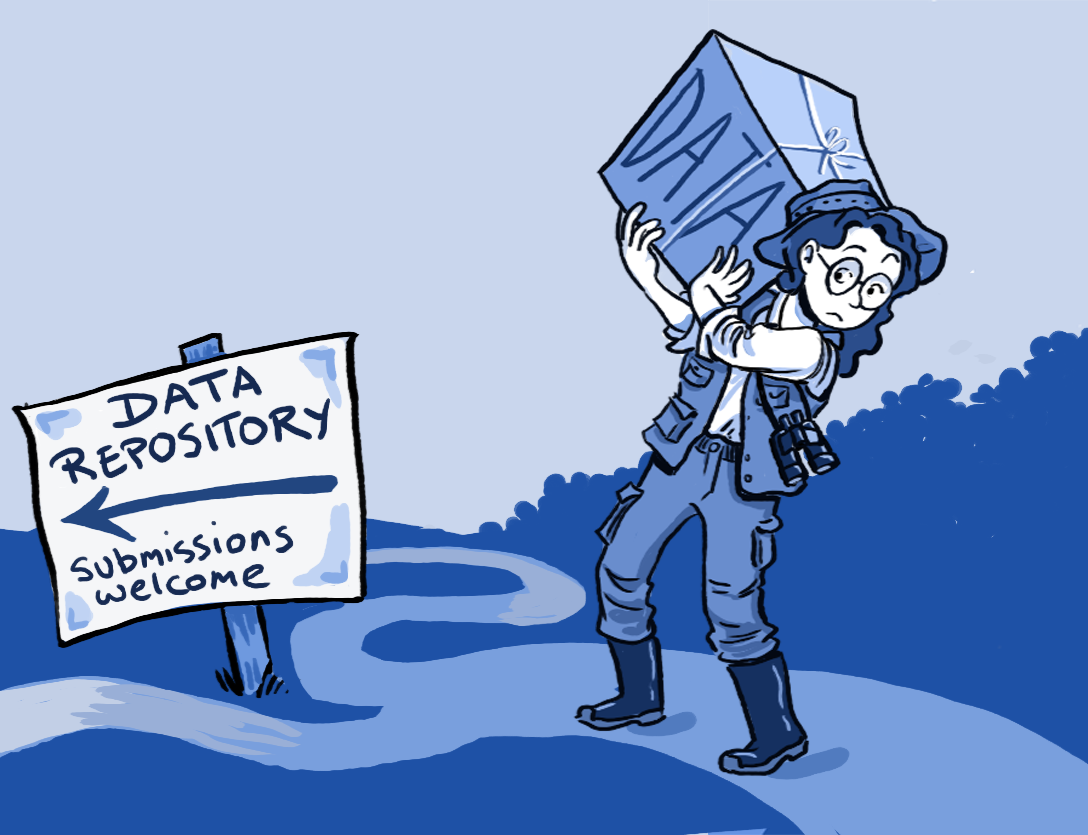
During a training session the department undertook with plant population monitors across the state, our team was introduced as looking for ‘choke points’ that could improve the flow of biodiversity data.
 From the simpsons, homer chokes bart. This team does not endorse real choking.
From the simpsons, homer chokes bart. This team does not endorse real choking.
This is an apt metaphor. Although ‘open science’ may have defenders in state sponsored ecology, its position is far from strong. Established ecologists may be reticent to take an open approach because of perceived risks. Risks to their wallet, their reputation, and the use the precious resource that is their time. Up to a point these concerns are fair enough. Up to a point these risks should be mitigated. The line is crossed where it is unfair to the taxpayer and where entitlement hinders the public interest.
Open Science may mean different things to different people but if you can convince me that it is not at least these four I will eat my hat:
Lets’ use a hypothetical example to investigate how open science applies to public field ecology.
Dastardly Science Inc. is contracted to see if a population of a bird, Extremelyum Endangeredus would survive the construction of a death ray. Lisa, the mad scientist who hired Dastardly Science Inc., will preferentially hire the company that is the most clever at getting developments through despite environmental concerns.
 Professor Farnsworth brings out a small version of Lisa’s death ray development proposal.
Professor Farnsworth brings out a small version of Lisa’s death ray development proposal.
Dastardly Science Inc uses tests the four parameters of the Extremelyum Endangeredus population. These are Births, deaths, immigration, and emigration.
What constitutes acceptable transparency of methodology, observation and collection in population monitoring? If we don’t also think about the way that a technology could be used to harm others we have failed to be diligent in our thinking.
Transparency in methodology comes up through various iterations of ‘Hypothesising After the Results are Known’. Dastardly Science Inc could add assumptions to the model during the experiments and observations. For instance if many birds are being zapped by the death ray during the death rate experiments, the company could add a ‘learning curve’ hypothesis in which birds that see other birds get zapped are less likely to get zapped themselves. This would reduce the mortality estimate to explain away non-helpful results. Further statistical jiggery-pokery could be used to come to spurious conclusions.
The answer to this may be pre-registration of hypotheses that are interrogated openly by other scientists. Such a thing is beginning to be used in neuroscience and is not done in ecological consulting.
“We conclude that to abate the impact of the increase in light emitted from the death ray, Nicolas Cage should appear in 4 fewer movies over the next 5 years.” Dastardly Science Inc Technical report.

Dastardly Science Inc consultants could, for instance, walk around the property and ignore that they saw any birds. They could pretend they lost their field notes. They could put cotton in their ears. The could outright lie. Without transparency and accountability in the observation and collection practice, we simply have to trust a company with dastardly in its name! In this case the evidence of absence is insufficient.
Raw audio files from bird call survey methods, pictures sent immediately that they are taken to an independent database, and independent citizen scientist observers must be included to make such a process transparent.Transparency in observation and collection in field ecology means seeing who, what, when, where and why observations were collected.
 The three wise monkeys know how to be a compliant environmental consultant. Monkey see no evil, monkey hear no evil, monkey speak no evil.
The three wise monkeys know how to be a compliant environmental consultant. Monkey see no evil, monkey hear no evil, monkey speak no evil.
The second choke point of open science is “Public availability and reusability of scientific data”, and this highlights the need for access at multiple levels of data. The raw data should be available, but also the source code that was used for statistical analysis, and the product that came at the end of that. If there is a mistake in the code, then other people can search for and reanalyse it to come up with better results. Each step that in the chain of evidence from collection to analysis and presentation should be available to the public in a timely manner so that anything that Dastardly Science Inc does can be interrogated.
Furthermore, the monitoring of Extremelyum Endangeredus, just like many other species is not just one spatial population, but the death ray site is connected to a larger metapopulation. This means that collaboration with research at other sites is necessary to understand the full impact of migration between sites on the overall population viability.
 Homer, from ‘the simpsons’, demonstrates the principle of species metapopulation. The guard hitting him at the embassy may discourage returning to a site but this doesn’t mean he’s dead.
Homer, from ‘the simpsons’, demonstrates the principle of species metapopulation. The guard hitting him at the embassy may discourage returning to a site but this doesn’t mean he’s dead.
The third choke point of open science is “public accessibility and transparency of scientific communication”. The open science framework have created a repository where contributors can store files, share work, register research hypotheses, and collaborate online as openly as possible. However, public transparency in state sponsored conservation science also requires something more.
There is a difference between academic and consultant research. Dastardly Science Inc may not be publishing academic research papers, but its communications relate to commercial and government matters. What previous relationships do they have with any government officials and what communications have occurred with them? Are there conflicts of interest by anyone deciding upon the outcome of the death ray approval? Transparency in public ecology scientific communications combats corruption.
 At least Montgomery Burns, of the simpsons, says what he means about the blurry line of corruption.
At least Montgomery Burns, of the simpsons, says what he means about the blurry line of corruption.
The fourth and final choke point is the “Using web-based tools to facilitate scientific collaboration”. This may seem nicer than the other choke points, but collaboration comes at a cost so facilitation may take some neck ringing. In the example, Dastardly Science Inc has no reason to collaborate with citizen scientists because they may find evidence against company interests, but they must anyway for the sake of transparency and for the public good…
